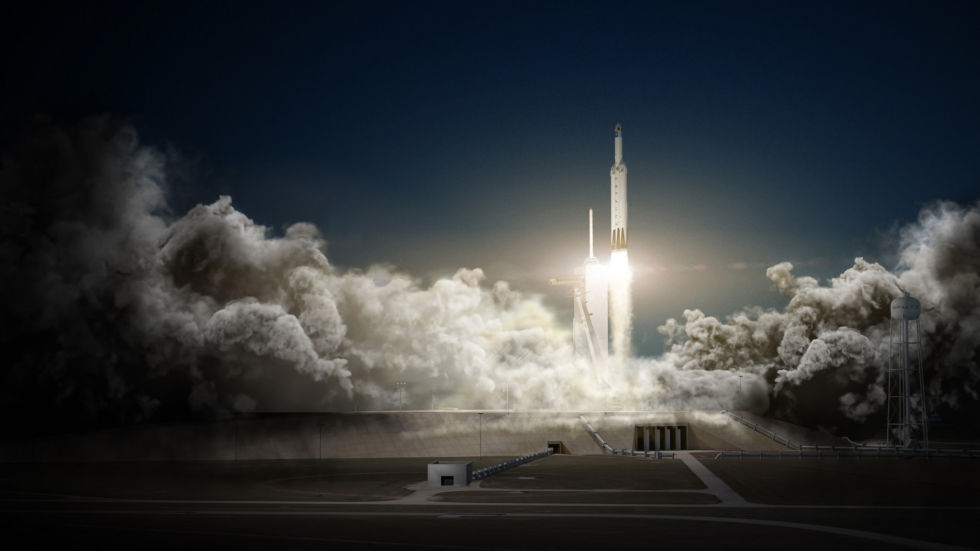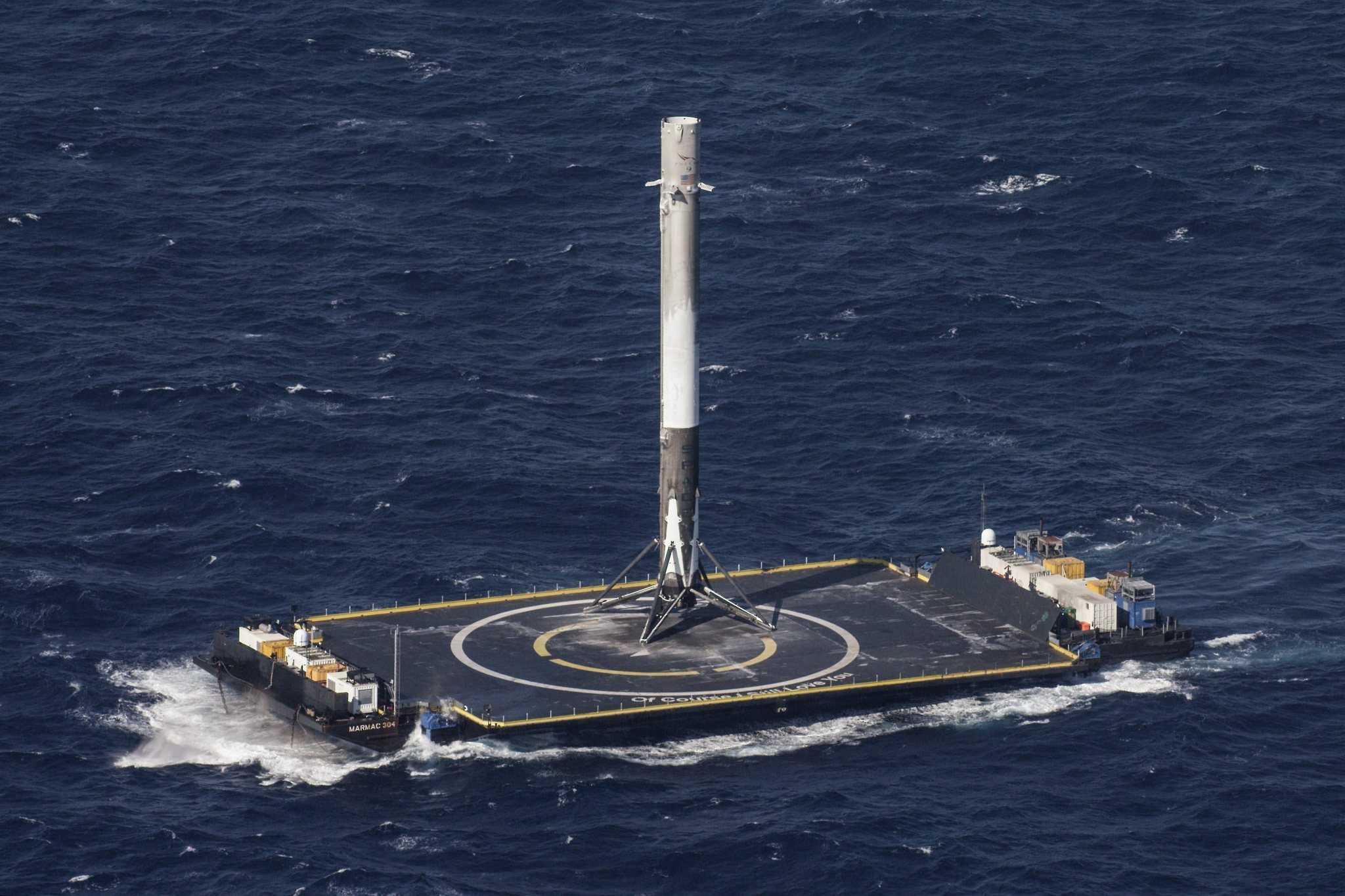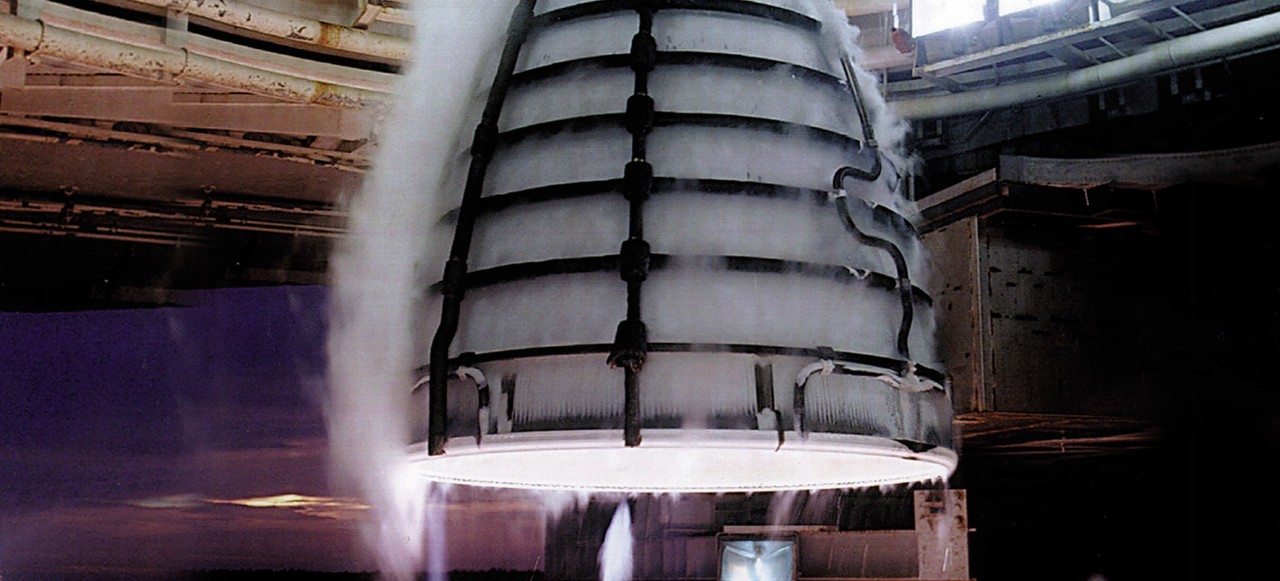SpaceX in 2017: a lot of plans

The past year has been hard for SpaceX. In general, the company has more good moments, but the rocket explosion at launch in September is, of course, a huge problem. As for the reputation of SpaceX, and for the entire rocket and space industry. Nevertheless, the company is not afraid of difficulties and slowly (or even not slowly) goes forward.
Fortunately, the company managed to achieve many goals, including the return of the first stage of the carrier rocket. The steps were repeatedly succeeded in planting both on a platform on solid ground and on a floating platform. All this is necessary for SpaceX to reduce the cost of launches - according to Ilona Mask, in case of re-use of rocket elements, the cost of outputting a payload can be reduced by 30% or even more. This year, Musk plans to do more than in the past. What are the plans for the company? Let's get a look.

')
New launches Falcon 9
Of course, without launching rockets into space, SpaceX’s work loses all meaning. Therefore, the main task that needs to be addressed in the near future is the resumption of Falcon 9 launches. Mask was not accustomed, and the next start is scheduled for this month. The rocket of the company is to deliver commercial satellites Iridium-1 to Earth orbit. Iridium plans to send ten devices to space at once, which will significantly improve the network performance of one of the most well-known telecom operators.
According to the contract, SpaceX, subject to the successful launch of all satellites into orbit, should receive almost half a billion US dollars. If more precisely, then $ 492 million. First, satellites will be launched every three months, and then, if everything goes according to plan, then every two. Despite the explosion of Falcon 9, which destroyed commercial cargo, there are no problems with orders for SpaceX.
The company, by the way, was able to identify the problem that led to the explosion. It turned out that the cause was a crack in the helium supply system to the tank with liquid oxygen. Liquid oxygen as a result of transition to the solid phase. In the end, all this led to a domino effect, the failure of a number of systems that caused the explosion. In November, Musk stated the following: “I think we found out the cause of the incident. The most interesting thing is that nothing like this has ever happened in rocket science. ” “The problem is complex, it includes liquid helium, carbon composites and solid oxygen. Oxygen has cooled so much that it has entered a solid phase, ” said Musk.
Due to the accident, the deployment of the Iridium satellite constellation had to be postponed to 2018. But, in general, so far so good. Not done, of course, and without trouble. So, the company Inmarsat decided to launch its satellite not with Falcon 9, but to use the Ariane 5 rocket. If the unsuccessful launches continue, then SpaceX can cost millions of dollars.
Re-sending the returned stage into space
The SpaceX hangar holds several Falcon-9 steps that have returned from space. Some of them, according to Mask, are suitable for restarting, while others are not, they are only suitable for study with a view to improving the design of the system. However, already at the beginning of this year, the company plans to re-launch the previously used first-stage rocket. And it will not be a trial run. With the help of the restored stage, SpaceX will send the satellite to another carrier, SES. It was with this company that SpaceX began work in 2013, and now SES is supporting a partner with the transition to the next stage of work.
It is clear that the company does not do this out of pure altruism. The fact is that the launch of Falcon 9 with a return to Earth stage will cost SES 40 million dollars instead of $ 60 million. Saving 20 million is serious. True, this is a preliminary assessment conducted by third-party specialists. SpaceX official statement on this issue has not yet been.
From the very beginning of work, Ilon Musk focused on cheaper launches due to the reuse of steps returned to Earth. Moreover, he argues that the restored steps can be used dozens or even hundreds of times. True, the second option will be available after the revision of the returned item. Nevertheless, if the company manages to use its level at least twice in a row, this will already be an achievement, and a very significant one.
In addition, the Mask plans for the development of Mars are entirely dependent on the success of the implementation of the plan for the reuse of rocket stages. Otherwise, the cost of the project of colonization (and so very expensive) will increase significantly.

Falcon Heavy Extra Heavy Rocket
Yes, its launch is also scheduled for this year. Load capacity of the new launch vehicle is about 54.4 tons. This is twice the carrying capacity of the Delta IV Heavy. It is planned that Falcon Heavy will be able to deliver about 54 tons to a low reference orbit, up to 21.2 tons to a geo-transition orbit and up to 13.2 tons to Mars. Now the media assembly is coming to an end.
The launch of this rocket has already been shown on video.
It is clear that this is only a model, but it allows you to get an idea of the process. In order to launch, the company must carefully prepare the entire system of the LC-39 complex. It also launched the Saturn V rocket, which sent the Apollo 11 to the moon.
Specialists of the company estimate the cost of launching this launch vehicle to be approximately 90 million US dollars. The SLS launch vehicle, which is currently being developed by Boeing, can lift about 70 tons into orbit, but its launch costs much more. The operating costs of launching this launch vehicle could be about $ 2 billion . It is logical that if SpaceX does everything well, the commission that tracks NASA spending may wonder about the goal of continuing to develop SLS at such a high cost of launching a rocket. The test launch of the SLS will take place no earlier than the end of 2018.
Delivery of astronauts aboard the ISS
NASA hoped that already this year it would be able to send people on board the ISS without the help of Russia. For this purpose, it was planned to use the SpaceX and Boeing spacecraft Dragon V2 and CST-100 (Starliner) being developed. The contracts are quite large - for Boeing this is $ 4.2 billion and for SpaceX - $ 2.6 billion.
Unfortunately, not everything went as expected at NASA. Both Boeing and SpaceX showed technical difficulties. Problems are gradually overcome, but the whole thing is not one month.
Now launches of ships with astronaut teams are postponed to May and August 2018 (for Dragon V2 and Starliner, respectively). But these are already regular “flights”. But trial launches should be carried out already this year, otherwise almost all the deadlines will be disrupted. For SpaceX, a contract with NASA means receiving funds for work and existence itself, so Ilon Mask is trying to do everything, if only everything went according to plan.
What about Mars?
Yes, everything that Mask is currently doing for the development of SpaceX is intended to “pave the way” to Mars. SpaceX should receive funds to implement its Martian plans, and without a coherent business model this is impossible. Independently, without injections, it is impossible to implement the Martian program.
However, at the same time as commercial launches and work with NASA, the company is developing new types of engines for its rocket. This is Raptor - powerful engines for the next generation of rockets. About Raptor now can not find much information. True, it is known that these engines are three times more powerful than Merlin, which work in Falcon 9 and Falcon Heavy. Earlier, Ilon Musk reported that this engine will develop traction up to 230 tons.
The operation of this engine consists of two stages. The first is the combustion of the fuel mixture (fuel and oxidizer) in the pre-combustion chambers. The second is the injection of fuel into the main engine combustion chamber due to the high-pressure hot gases produced during the first stage. It is planned to use liquid oxygen and methane as fuel.

RS-25 engine with pre-combustion chamber under test. This engine was installed in "Shuttles". Raptor will work on the same principle.
Next year, SpaceX plans to send an unmanned system to Mars using the Falcon Heavy launch vehicle. This is necessary so that the company's specialists can draw conclusions about the possibility of delivering cargo to Mars. If SpaceX succeeds in accomplishing this, then it will become the first private company whose spacecraft will land on the surface of another planet.
Perhaps Red Dragon will also be used by NASA as one of the tools for implementing the Mars Sample Return mission with the delivery of Martian soil samples to Earth. According to preliminary calculations, Red Dragon will be able to make a soft landing on the surface of Mars with about 2 tons of payload. This is more than 2 times the current record set by NASA's Sky Crane, which lowered the Curiosity 899 kg rover onto the surface of the red planet in August 2012. The larger volume and mass of the payload will allow the transfer of collected samples in Earth orbit (the original Mars Sample Return scenario implied the transfer of samples in the Martian orbit), which will reduce the potential risks and the cost of the mission.
What can go wrong?
The main threat to SpaceX plans is problems with launching Falcon 9, which will entail cancellation of a number of contracts and cautious attitude of partners in the future. Consequently, this will cause a decrease in the level of financial revenues. And without this, SpaceX will not be able to implement its plan for the development of Mars - after all, as mentioned above, this requires funds, and considerable ones.
One of the main tasks for the Mask is the creation of the so-called Interplanetary Transport System ITS (Interplanetary Transport System). The main components of this system are as follows: a returning launch vehicle for launching from Earth, an interplanetary spacecraft for delivering goods and people to Mars and returning them to Earth, plus a refueling vehicle for refueling a spacecraft in Earth orbit .
| Accelerator | Refueler | Ship | |
|---|---|---|---|
| Cost of production (in millions of $) | 230 | 130 | 200 |
| Reuse (times) | 1000 | 100 | 12 |
| Runs in one mission | 6 | five | one |
| Average maintenance cost per launch (in millions of $) | 0.2 | 0.5 | ten |
| The total cost of one mission (in millions of $) | eleven | eight | 43 |
This system will provide the ability to deliver goods to Mars at the rate of $ 140,000 per 1 ton of payload. This is just a great result. But it will be possible to achieve it only if SpaceX has everything going according to plan.
Source: https://habr.com/ru/post/400433/
All Articles